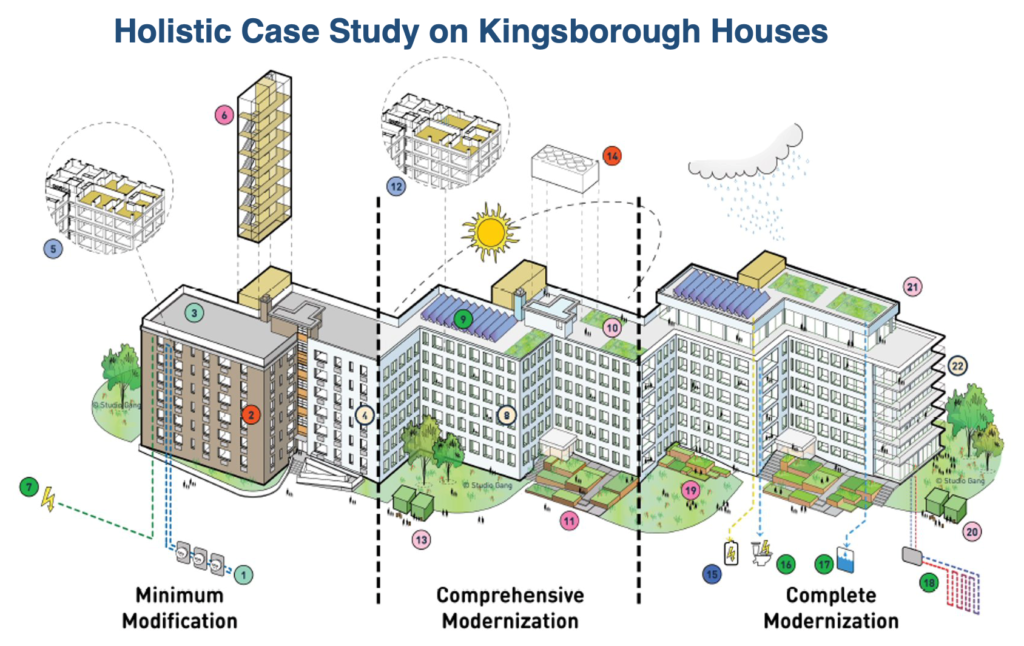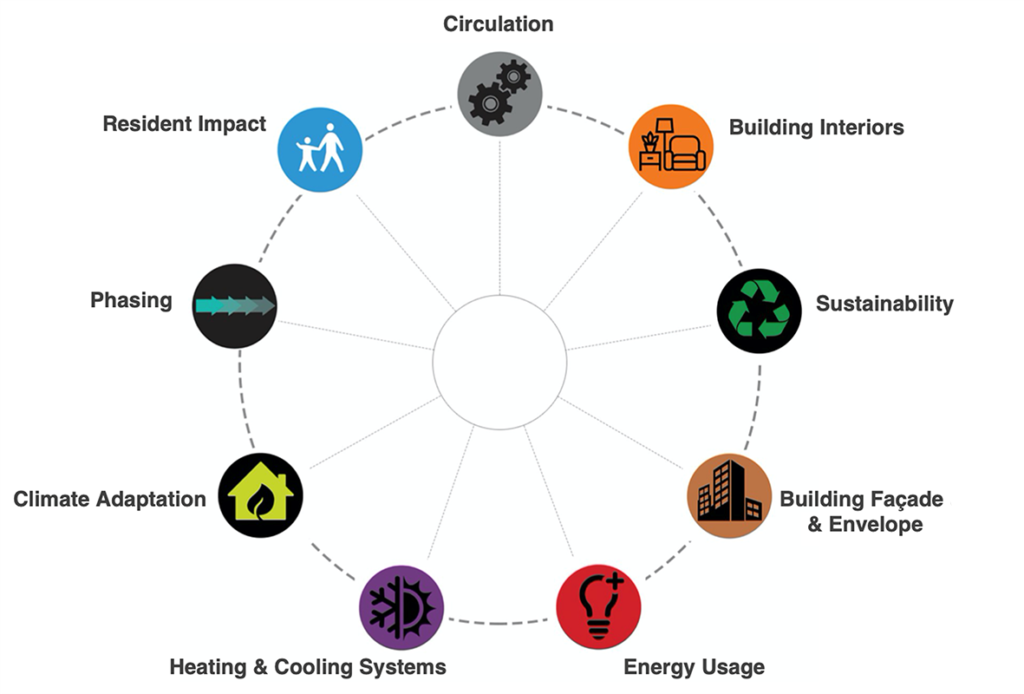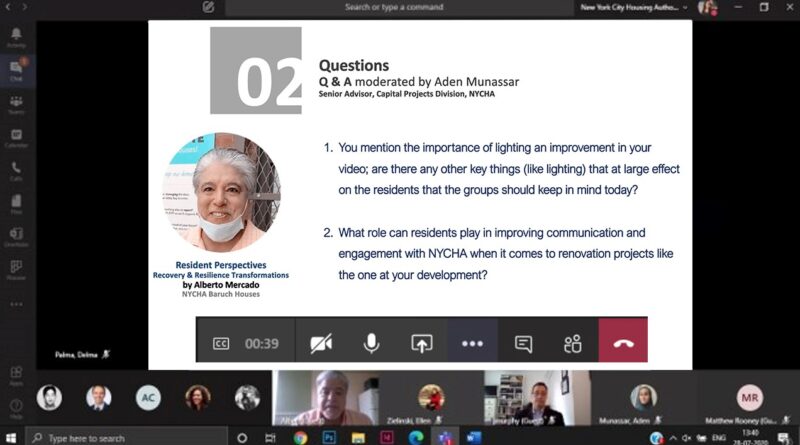Design Charrette Looks to the Future
Since its announcement on July 28, NYCHA’s Blueprint for Change has generated a significant amount of discussion, and in the process underscored the importance of “thinking outside the box” to renew and rebuild the country’s largest public housing portfolio.
With this in mind, NYCHA’s Capital Projects Division recently brought together industry experts, government partners, and NYCHA staff and residents for a virtual design charrette, or planning workshop. All told, some 120 representatives from 44 organizations attended the two-day event.
A Comprehensive Study

A key focus of the charrette was a case study on the comprehensive modernization of Brooklyn’s Kingsborough Houses. Developed in partnership with engineering, architecture, and construction firms, the case study provided a basis for participants to focus on various discussion topics being addressed (see illustration below), and flesh out the design strategies needed for the “gut-renovation” of a building. It also weighed best practices for phasing a renovation, considering temporary modular housing onsite, a new building, and a tenant-in-place renovation.

Hearing from the Experts
A panel discussion featured Baruch Houses resident Alberto Mercado, along with NYCHA leaders and industry experts. “I shared the resident perspective on the importance of lighting in crime reduction, the need for residents to be held responsible and accountable for vandalism, and other topics I know my fellow residents care about,” said Mr. Mercado. “I very much appreciated the opportunity to be on the panel, and I look forward to continuing to participate in the future.”
Breaking Out Ideas
Presentations and topic-specific break-out groups helped shed light on NYCHA building systems and operations, while generating ideas for stabilizing and renewing NYCHA housing. “Our buildings require a full reinvestment that hasn’t been possible for the last 60 years,” NYCHA Chair and CEO Gregory Russ told participants. “Part of the purpose of this design charrette is to generate ideas on how to make that investment, and what it means for the actual work we will do to comprehensively address the entire building.”
Delma Palma, a Community Design Architect in NYCHA’s Capital Projects Division, said she was impressed by the level of engagement across the board: “There was excellent participation in all the sessions, and numerous people expressed their interest in staying involved in the process. They know how important it is to plan for the future, and it’s encouraging how invested they were.”
Next Steps: Post-Charrette White Paper
The Capital Projects Division (CPD) is now working on a “white paper” based on the ideas and conclusions gathered from the break-out sessions. The paper will outline the process for the comprehensive modernization project in terms of design, construction, and stakeholder engagement. The paper will be used to inform a request for proposal for a comprehensive modernization project funded with City dollars related to the HUD Agreement. CPD is also working on an outreach strategy that will bring NYCHA departments, residents, and other stakeholders into the conversation about this new and transformative era.







